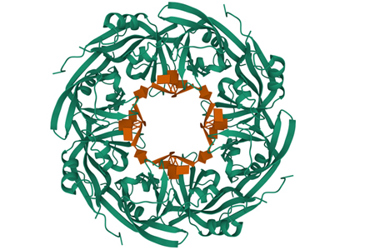Oh, Oligonucleotides! Everybody Wants In

By Louis Garguilo, Chief Editor, Outsourced Pharma

“We’re working on oligonucleotides,” says the bubbling biotech.
“We can do oligos!” cries the eager CDMO.
So it’s a deal?
Hang on, says Tony Sampognaro, Director, CMC Project Management, a professional who recently joined Stoke Therapeutics of Bedford, Mass., a biotech focused on oligonucleotides.

The challenge that Sampognaro and Stoke faces as they finish up a phase two study of their lead candidate, STK-001, targeting Dravet Syndrome, is securing a secondary supplier that can replicate their current process, or at least one with a comparable process.
In fact, says Sampognaro, “the organic chemistry of how oligos are put together is pretty easy. Although there’re new approaches on the horizon, oligo synthesis is a 40-year old platform technology.”
“The problem, though, is control – impurity control. Add to that the analytical and regulatory aspects are still in flux.”
An HPLC Party
Sampognaro says there are at least two moving factors in the oligonucleotides space.
The FDA continues to issue specific guidance, and analytical and purification technology is “getting better all the time,” which then drives further regulatory expectations.
This has resulted in “official/unofficial guidance” from FDA and other regulatory bodies.
Sampognaro believes this will ultimately lead to a not-to-distant future where “we’ll at least see therapeutic oligos treated in an almost indistinguishable manner from small molecules, in terms of impurity control and requirements, characterization, and other areas.”
That, in turn, should help those CDMOs who are bolting on or pumping up their oligo services.
In the meantime, Sampognaro stays grounded.
“There are some types of oligos that remain very challenging,” he says. “Previously, at KSQ Therapeutics, I was in charge of CMC relating to singe guide RNAs (sgRNA). These sgRNAs are oligos that serve to create the active gene-editing component of a CRISPR/Cas9 therapy [also known as a ribonucleoprotein complex or RNP]. Those are much longer than therapeutic oligos, which are typically 20 or 30 nucleotides long. The sgRNAs I was doing – for a CRISPR/Cas9 cell therapy – are 100 nucleotides long.”
With today's technology, he says, it's “really not possible to produce those in much better than somewhere between 65-80% purity by HPLC.”
Scientists have to rely on different methods of proving safety for patients. With oligos, says Sampognaro, “you’re not producing individual impurities, but classes of impurities that often elute under the same peak in HPLC.”
Especially in early stage, he continues, what you think is the main peak most likely does not contain just your oligo of interest, and that has to be left to later stage development and characterization.
“But when you start to look under that peak with more advanced analytical techniques, there's usually a party going!” he says with a laugh.
Therefore, compared to small molecules, there are increased analytical and regulatory requirements. Sampognaro says it goes back to your starting materials, such as phosphoramidites, the building blocks of new bases in a growing oligo chain.
“When you use a particular phosphoramidite, if you have a 0.1% impurity and you use it ten times, now you have ten 0.1% impurities which usually elute as a single peak that adds up to 1%.
“So the manufacturers of these starting materials must have exquisite impurity control. Otherwise, you wind up with an intractable mess in your crude mixture.”
More clearly, when outsourcing, you need suppliers and CDMOs who know exactly what they’re doing, particularly in the analytical and quality control areas.
But are there enough of them to handle the march of the oligos?
Too Many, Too Few
There are a few dimensions to that question, Sampognaro replies.
Currently, there are some 15 approved oligo therapies on the market to treat rare diseases, but "legions of them" are in development and already in trials. “The oglio field is exploding,” says Sampognaro.
Thus, the demand for oligo-based or experienced CDMOs has also exploded. Finding that verifiably capable CDMO is the first challenge. Getting on its schedule is the second.
Sampognaro says the wait can be 12 to 18 months. In response to that backlog, many CDMOs are building out new oligo capacity.
Of course there’s always a second path for sponsors. At least one company, Editas Medicine, decided to build its own phase-appropriate, small-scale GMP drug substance and product manufacturing capacity.
But the build option, as all Outsourced Pharma readers know, is its own gamble, the risks of which we need not raise again here.
So back to the CDMOs.
“Compared to small molecules or biologics, there are far fewer CDMOs out there,” says Sampognaro.
“The biggest names that come to my mind are [Nitto] Avecia, and BioSpring. I've worked with both; they're excellent. There are other providers who have extensive experience with polypeptides, and are trying to leverage that with oligonucleotides.”
Does Sampognaro think that's logical?
“It is,” he says, although there are technical differences. “I’ve experienced times when there was a bit of overconfidence in how well the one translates to the other. However, there is much overlap, and it can be a great starting point.”
I mention to Sampognaro that in recent interviews I conducted at our CDMO Leadership Awards ceremony in March, a number of CDMO executives spoke excitedly about their new or expanding oligonucleotide services.
How does Sampognaro find out about these offerings as they come on line at potential external partners?
“Aside from the established names, where information is easy to come by, sometimes it’s through sources such as Outsourced Pharma. I've been a fan of your editorials, the Capacity Updates, and your webinars.” [Hey, I’m simply reporting what he said.]
Often, Sampognaro continues, it's word-of-mouth with colleagues, or trade shows and conventions. “There're a variety of channels,” he adds, “but as far as ‘marketing efforts’ go, I think it is difficult for CDMOs.”
“If I were a CDMO, let's say established in small molecules and/or polypeptides, and I want to expand into oligos, aside from building that capacity and acquiring that technical acumen, how would I go about marketing that? Or trying to transfer the brand from a good reputation for small molecules or polypeptides to a name in oligos?
“Frankly, I just don't know. That’s an interesting marketing challenge.”
One more challenge to add to the oligo chase.
